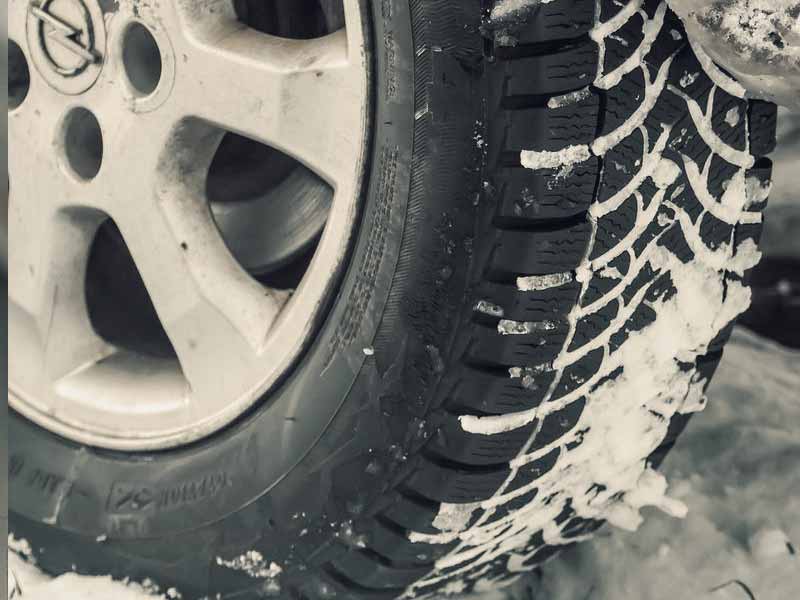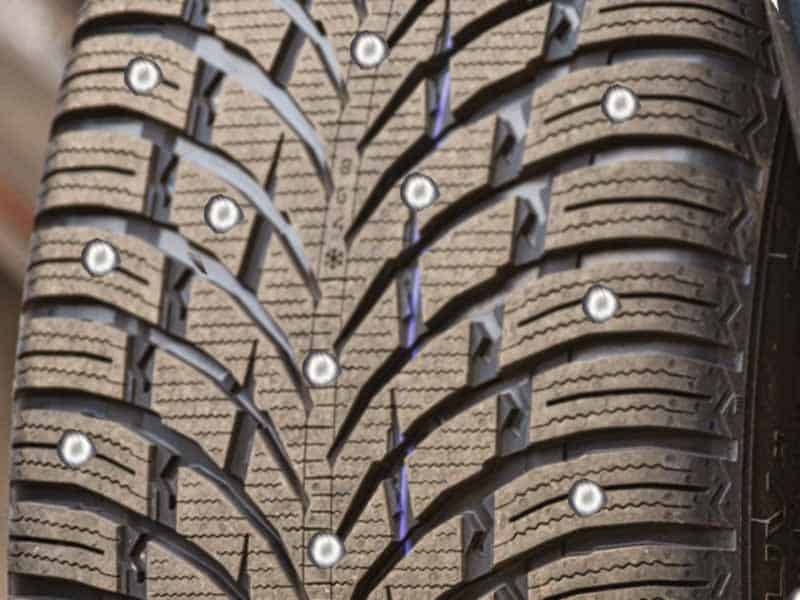Studded winter tires cannot be used in mild weather conditions because they reduce traction and are also banned in many states. However, it is an easy job to clear your tire treads from these metallic pieces and you can even do it by yourself using simple tools.
To remove winter tire studs, lubricate the stud holes and use a stud removal tool to pull these metallic studs out from the tread.

Table of Contents
How to remove snow tire studs?

Use following procedure to de-stud your winter tires on your own;
- Use a hydraullic jack to lift up your car and remove the tire. This makes it easier to handle the tire while your are pulling off the studs.
- Next, lubricate a few studs so that they come out easily upon pulling. In this regard, lubricants which are used while mounting tires work best. Some people also use motor oils or dishwasher liquid to reduce friction but you should confirm the suitability of a liquid before applying it to tire’s surface as some liquids get absorbed in rubber and may reduce its traction qualities.
You can use different tools to remove tire studs, according to the following methods;
Using Pillars
- Take a pair of pillars and then grab the little bulging head of stud.
- Twist the stud and pull it out of the hole.
Using Bruno tool
- Grab the tool and insert it in stud hole in a way that tiny stud gets fixed in its hollow end.
- Twist it and pull out. Stud will easily come out with a jerk.
Using screw driver
- If you do not have specified stud removing tools or pillars, you can get studs off your tire using the simple flat head screw driver. This method works best if you have flat base studs on your winter tire.
- Carefully insert the tip of screwdriver in stud hole, do not push it with a lot of force as you don’t want to tear your tire tread.
- Position the screwdriver head below the stud base, tilt it slightly and then give it a jerk outward to throw off the stud.
- Repeat the process across the whole circumference of the tire to remove all the studs.
- Now perform a puncture-check to ensure that your tires are not damaged.
Tools for tire stud removal
There are a few specialized tools made for removing studs. Plus, you can do the job with some common tools as well. These tools are listed below:
Bruno Wessel stud removal tool
This tool makes stud removal a lot easier because all you have to do is to put the tool on the stud head and then pull it out.
Its tip is hollow, which fits tightly on the stud and when you pull it out the stud also comes along.
It is available in different tip sizes and for different stud types. Hence, you can choose according to your tire studs.
Kristopher Romo tool
This small tool resembles flat head screwdriver but it works better than the common tool because of two of its design features.
Firstly, its handle is horizontally elongated, giving the tool its T-shape.
This handle makes it easier to grab the tool while DE-studding your tires which involves a good effort as usually there are 60 to 100 studs per tire and you would have to remove 240 to 400 studs for DE-studding a complete set of tires.
The other feature which gives it an edge over common screwdriver is the concave shape of its end, this thin, curved edge easily slides down into stud hole and effectively tosses the stud off.
Screwdriver
This is the most commonly available tool to get the studs off your tires.
Flathead screwdrivers work better than pointed screwdrivers because they are more effective in lifting the flat base studs.
Plus, the risk of puncturing is higher when you use a pointed tool.
Pliers
Pliers come in handy for removing studs as they are both, easy to find and easy to use.
The best thing about using this tool is that it minimized the risk of tread damage as you won’t be putting any tool within the tread holes.
Is it safe to remove studs from tires?
Yes, it is safe but you should be careful not to damage the tread rubber while removing tiny spikes.
Sometimes, metal part may cut into the tread while inserting tools in the stud hole or due to deep penetration of the stud.
As a result, when you remove the stud, your tire gets punctured.
That is why you should check your tires after removing the studs to ensure that there is no hole and air would not leak out, making your journey unsafe.
To check your tires for punctures you can use any one of the following methods;
Water bucket method;
Submerge your tire in a water bucket, and look for bubbles.
If you see air popping out of a certain part, it is likely that it is punctured from that place.
Soap solution method;
An alternative and relatively easier way of checking for deep cuts is to spray a mixture of water and soap on the tire.
If you see bubbles foaming out, it is a sign of a punctured tire. Hence, you should look for a repair.
How much does it cost to remove studs from tires
If you are not comfortable removing studs from your tires by yourself, you can have a mechanic to do the job for you.
The cost of stud removal varies depending upon the type and number of studs in your tires as well as the service station you are going to.
Generally, this cost would span from 30$ to $50 for a complete tire set.
How long does it take to remove studs from tires?
The time depends upon the number of studs on your tires as well as the expertise of the person who is doing the job, you may get this done quickly at the auto center by a mechanic as compared to yourself.
However, it will roughly take an hour or so to remove studs from your tires.
Bottom Line:
- You can easily remove winter tire studs using a specialized stud removal tool or common pillars or a flathead screw driver.
- When taking the services of an auto service station, you would pay about $30 to $50 for removing studs from a set of four tires.
- Removing tire studs can take up to an hour.